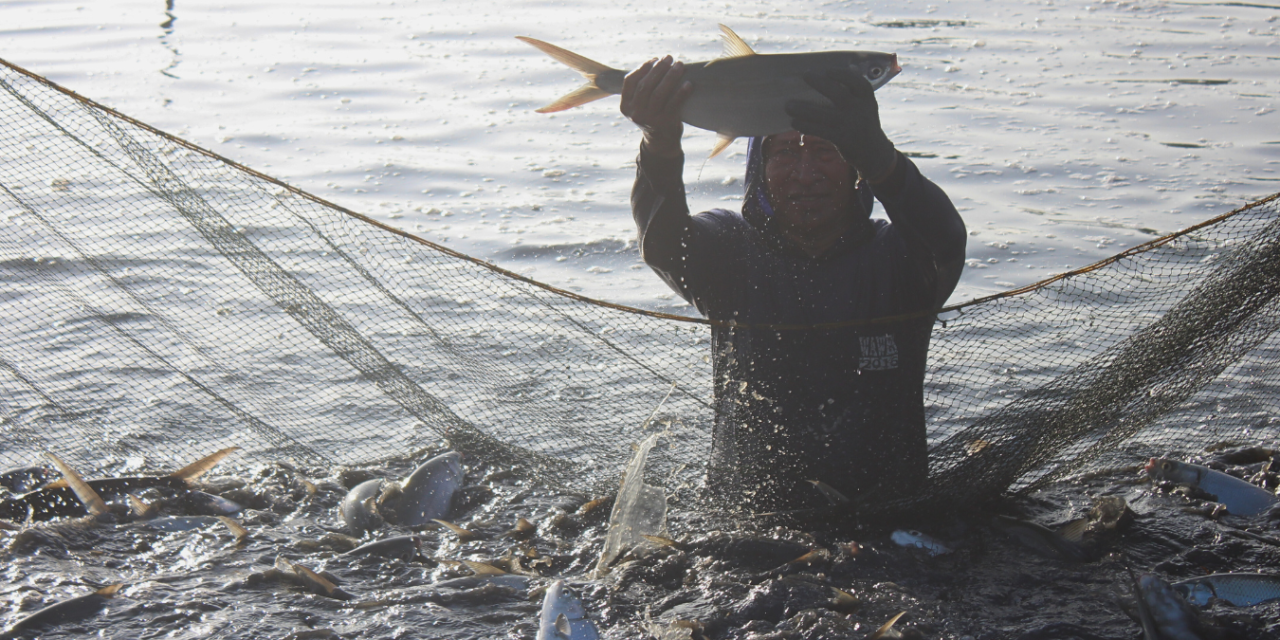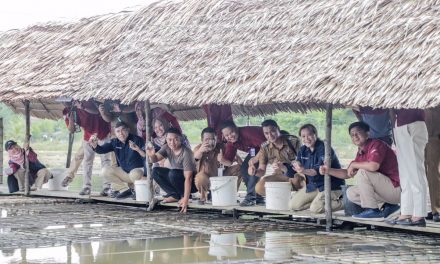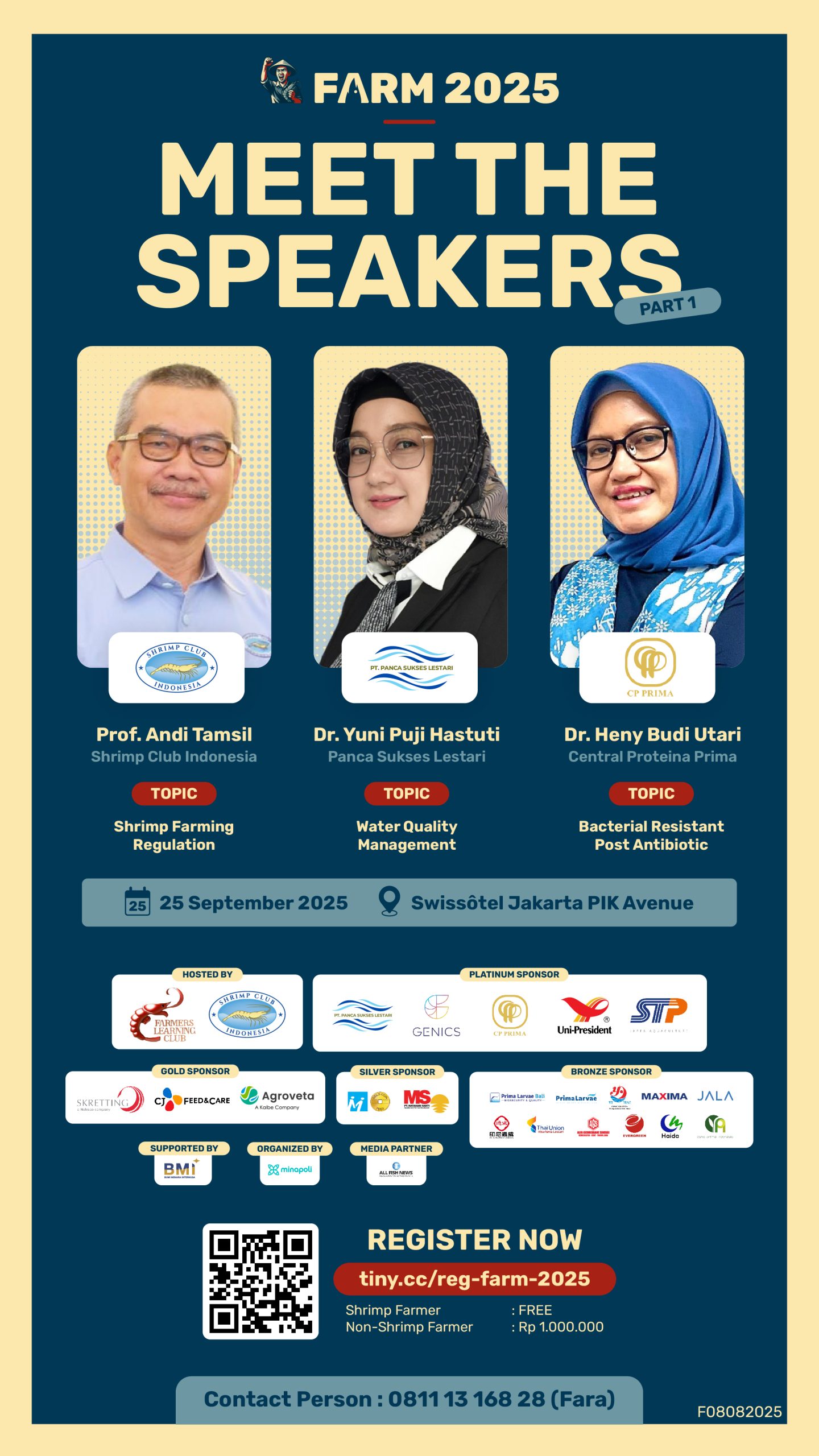The milkfish, known as ikan bandeng in Indonesia, offers multiple business opportunities across its production stages, from hatcheries to processing. The cultivation is low-maintenance, resistant to diseases, and can flourish without much additional feeding. On the consumer side, milkfish boasts high nutritional value. For every 100 grams of raw meat, it contains almost as much protein as the pricier salmon, totaling about 20 grams. This is why it enjoys popularity both locally and globally.
It’s fascinating that besides being a food choice, small milkfish serve a specific market as bait for catching tuna. This creates significant opportunities for countries that produce milkfish, such as Indonesia, Taiwan, Malaysia, and the Philippines.
Production centers
According to Mumfaizin Faiz, Chairman of the Indonesian Milkfish Association (Aspubi), milkfish production in Indonesia focuses on areas like Tarakan in North Kalimantan and the northern coast of Java, known as Pantura. In Pantura, farmers usually use semi-traditional methods for cultivating milkfish, involving full or partial feeding. On the other hand, in Tarakan, the majority of production relies on traditional methods that don’t involve any feeding.
Lampung is a key milkfish producer in Sumatera, with Aceh also gradually becoming a cultivation center, albeit on a smaller scale. Moving eastward, Sulawesi takes the lead in milkfish production, spanning areas like Makassar, Gorontalo, and Kendari. However, much of the production in this eastern region still relies on traditional methods without feeding.
“Exports primarily come from Sulawesi, Gorontalo, Tarakan, and Java’s northern coast, and these are the ones sent out as consumable fish,” highlighted Faiz during the recent 21st Aquabinar organized by TROBOS Aqua.
Meanwhile, Bali serves as a specialized hatchery region capable of meeting the seedling needs in domestic production hubs and neighboring countries like the Philippines and Taiwan.

Appealing across all production segments, milkfish can be an alternative flagship commodity. © Asep Bulkini
Logistics and size challenges
Although the milkfish market is robust, its trade encounters significant challenges, particularly due to the steep logistics expenses involved in transporting it from cultivation ponds to the markets.
For instance, milkfish originating from Tarakan and South Sulawesi are typically sent to Java markets in frozen form due to limited local consumption in these areas. Shipments usually go directly to Jakarta or through Surabaya, then onward to Jakarta via land routes.
“Our challenge sometimes lies in the extremely high logistics costs. If we take frozen milkfish from Tarakan to Jakarta, the cost for a 20-feet container is around Rp42-45 million. Whereas exporting from Surabaya to Incheon, South Korea, cost less than Rp30 million. So, exporting is much cheaper. This is our challenge,” he explained.
Another challenge for the export market is size suitability. According to him, international buyers generally prefer larger fish weighing between 500–800 grams and 800–1,000 grams. However, Indonesian milkfish farmers produce a variety of sizes. Despite this, smaller fish are still valuable. Locally, there’s a preference for medium-sized milkfish, around 100–500 grams. The tinier ones, on the other hand, are sold explicitly for use as tuna bait.
Strengthening the supply chain
To overcome these challenges, Mumfaizin Faiz, with experience in aquaculture since 1998, suggested strategic advice for stakeholders involved in the milkfish value chain. He highlighted the importance of what he calls the “three wheels” in a successful milkfish production value chain. These wheels encompass the Farms or cultivators managing on-farm production processes from seedlings to the desired sizes for consumption. Then, the Factory or fish processing unit (FPU) steps in to process fish based on market demand. Finally, the Market serves as the crucial endpoint where demand for the product resides
He emphasized that these three wheels need to synchronize. Cultivators must understand the market’s needs, which often have specific requirements. For example, regarding size or the condition of the meat, which should ideally be belly meat (without bones, stomach contents, head, and tail), a technical aspect handled by the FPU.
“This (farms, factories, and markets) should work together. Imagine, sending one container of 40 feet loaded with 25 tons of fish. If I take it from the harvest, let’s say one hectare yields five tons, and those five tons need sorting; not all sizes may fit. Exporting can be challenging as sometimes there’s a lot of fish but the sizes don’t match,” Faiz added. “So, let’s say we envision one hectare producing five tons for export, that means I’d need 25 hectares for one shipment.”
Matching the right quantity and FPU specifications of milkfish raw materials is a significant challenge when not synchronized. To tackle this, Faiz is working via Aspubi to align all stakeholders along the supply chain, from hatcheries and farmers to processing units.
The “bandeng presto” market potential
In the market, people highly favor processed milkfish products like “bandeng presto” (processed through heating and pressure). In rural areas, locals traditionally cook “bandeng presto” using firewood which takes 3 to 5 hours to prepare. This cooking method is well-known among Indonesian communities and is occasionally brought back home as a food souvenir.
Furthermore, small eateries hold promise as potential markets for “bandeng presto,” especially when offering smaller sizes. Typically, milkfish dishes in medium sizes are priced between IDR 5,000-6,000. Yet, when served in smaller portions, the cost could be reduced by half, around Rp 2,500-3,000.
“Bandeng presto” boasts potential for inclusion in Hajj catering owing to its delectable taste, convenient serving, and enduring quality. Faiz calculated the demand to be around 105 tons. During the Hajj season, the pilgrims are considered to consume it only about five times. However, its Hajj market potential faces obstacles due to licensing requirements set by the Saudi Food and Drug Authority (SFDA) that Indonesia hasn’t met. As a result, Indonesian exporters cannot directly supply Saudi Arabia, despite a significant demand for milkfish among Hajj pilgrims.
Considering its immense potential across different sectors, it’s worth pondering on filling vacant ponds with milkfish seeds. “Milkfish acts as a support. What used to be overlooked is now seen as a productive and secure investment for the future,” Faiz concluded.
***
This article has been translated from the original Indonesian title “Ikan bandeng laku di segala segmen“








